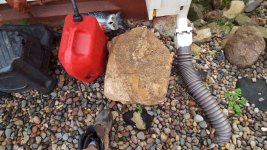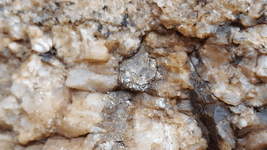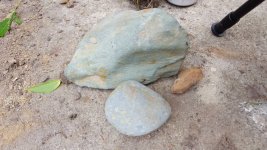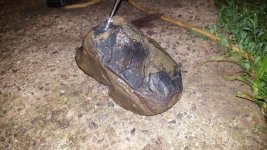markfothebeast
Greenie
- Jun 2, 2017
- 11
- 0
- Primary Interest:
- All Treasure Hunting
Landscaping yard. Found unusual rocks, minerals, etc. Never had a home around here with this type of soil and rock.
Photo 1 and 2. Large rock with quartz. Scraped off what appears to be gold flakes. Is this gold? Could there be more inside the rock? How do you crack something this large open?
Photo 3. I keep finding green rocks. Havent seen these around here before. What type of rock is this? They are everywhere when I did 42" for footings.
Photo 4. Iron? Magnet sticks to it. Shiny, black/grey and smooth texture.




Sent from my SM-G920V using Tapatalk
Photo 1 and 2. Large rock with quartz. Scraped off what appears to be gold flakes. Is this gold? Could there be more inside the rock? How do you crack something this large open?
Photo 3. I keep finding green rocks. Havent seen these around here before. What type of rock is this? They are everywhere when I did 42" for footings.
Photo 4. Iron? Magnet sticks to it. Shiny, black/grey and smooth texture.





Sent from my SM-G920V using Tapatalk


 ) isn't that large, just turn the piece over and around and out of direct sunlight and if the gold stops shining and looks drastically differant, it isn't gold. Most minerals you hope are gold lose their shine and become almost invisible away from good lighting.
) isn't that large, just turn the piece over and around and out of direct sunlight and if the gold stops shining and looks drastically differant, it isn't gold. Most minerals you hope are gold lose their shine and become almost invisible away from good lighting.